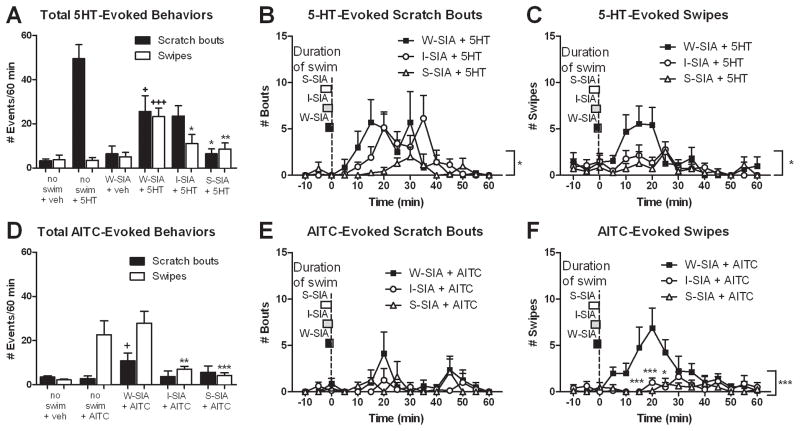Figure 2.
Effects of swim stress on 5-HT- and AITC-evoked scratching and swiping behaviors. (A) Bar graph plots mean number of hindlimb scratch bouts (■) or ipsilateral forelimb swipes (□) directed to the cheek injection site under each condition (N=6–12). (B) Time course of 5-HT-evoked scratch bouts under each swim condition (N=7). Boxes to left indicate duration of swim under each condition, aligned with the end of the swim and beginning of tailflick testing at time 0 (dashed vertical line). 5-HT was injected in the cheek immediately prior to each swim condition. (C) As in B for 5-HT-evoked swipes (N=7). (D) As in A for AITC-evoked scratching and swiping (N=8). (E, F) As in B, C for AITC-evoked scratching and swiping (N=8). For all panels, error bars represent SEM. + P≤0.05, +++ P≤0.001 vs no swim + 5-HT; *P≤0.05, **P≤0.01, ***P≤0.001 vs. W-SIA + 5-HT; repeated measures ANOVA, 1-way ANOVA, Tukey post-hocs, or unpaired two-tailed t-tests as appropriate (see text).

